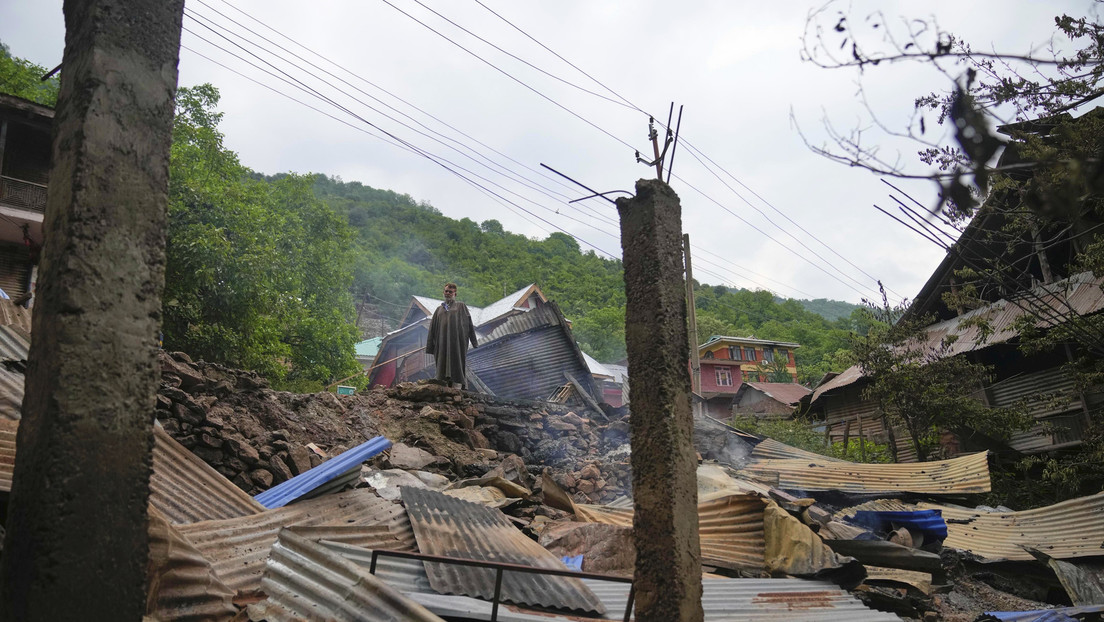
Moscow, May 10.- In recent days, tensions between India and Pakistan have intensified significantly, as both countries exchange attacks of varying magnitude, which threatens to lead to a larger conflict.
Early Saturday morning, several attacks were reported against three Pakistani airbases: Nur Khan, about 15 kilometers south of Islamabad, and Rafiqui and Murid in Punjab province.
According to the Director General of Public Relations of the Pakistan Armed Forces, Lieutenant General Ahmed Sharif Chaudhry, India has fired "six ballistic missiles from Adampur", an Indian city in the Jalandhar district, one of them against "its own general area" in that town and five against the Amritsar area, a city in the north of the country.
"This is a shocking fact and a provocation of the first order, since India has started firing ballistic missiles against its own population, which makes no sense. It is an act lacking common sense," he said. He also warned that Pakistan will respond in due time. "Wait for our response," Sharif Chaudhry asserted.
Shortly after India launched attacks on its military bases, the Pakistani government announced the start of a large-scale operation called Bunyan ul Marsoos.
According to security sources cited by Geo News, a BrahMos missile storage facility in Beas was destroyed, while the Indian airbase at Udhampur and another airbase in Pathankot were heavily attacked. Similarly, they announced the destruction of the Indian airfield at Adampur, noting that it was the site used to launch missile attacks against the Sikhs of Amritsar.
In parallel, Pakistan has disabled 70% of India's power grid through cyber attacks, according to security sources. Parts of Jammu and Kashmir have been left without power, but local authorities insist the blackouts were imposed for security reasons due to airstrikes in the region and drone sightings.
Previously, on Friday night, explosions were heard in the Indian region of Kashmir and in the city of Amritsar, located in the state of Punjab. Given this, the Indian Army reported that it was shooting down drones launched from Pakistan against 26 locations in an area of western to northwest India, from Kashmir and the states bordering Pakistan to the coasts of the Arabian Sea.
In addition, ten explosions were heard near the airport in the Indian city of Srinagar, in the state of Jammu and Kashmir, and there were explosions in other places in this region, disputed between New Delhi and Islamabad.
In turn, according to Indian Air Force officer Vyomika Singh, the country responded with drone strikes against several targets in Pakistan and destroyed a neighboring country's air defense system.
Similarly, according to media reports, India has deployed warships equipped with supersonic cruise missiles to the Arabian Sea, positioning a considerable naval force near the Pakistani coast. According to an Indian defense source, New Delhi has ordered the movement of its Western Fleet to the north of the Arabian Sea, placing it within striking range of Karachi, Pakistan's largest port and a nerve center for the country's economy.
In response to airstrikes launched by Pakistani forces, India has decided to close 32 airports in the northern and western parts of the country to all civilian flight operations until May 15. In this context, it is worth remembering that on April 24, Pakistan closed its airspace for Indian operators, while India did the same with Pakistani airlines.
In the face of rising tensions between the two countries, Pakistani Defense Minister Khawaja Asif warned of the imminence of war with India, stating that "there should be no doubt that conflict is already at their doorstep. We do not see any other means available other than this option [war] due to the aggressive actions taken by India in the last four days. We have tried to de-escalate the situation, but the chances of that seem minimal. We have to pay them in kind, he stated.
Likewise, from the country's Government they assured that the Pakistani Armed Forces are fully prepared to defend the homeland, airspace and national security.
Since India launched its operation, local media have reported exchanges of fire on both sides of the border, both on the ground and in the air.
Thus, the aerial combat in which, according to Pakistani data, five Indian Air Force aircraft were shot down (including three Rafale, a MiG-29 and a SU-30), was one of the "largest and longest in recent aviation history", a Pakistani security force source told CNN.
According to their data, a total of 125 fighters took part in the battle on May 7, which lasted more than an hour. No aircraft crossed their respective borders during the combat, and only missile exchanges occurred at distances that sometimes exceeded 160 kilometers.
Amid the hostilities, villagers have fled the border areas between both countries and many cities have been affected by blackouts and warnings of air raids, while residents shop for essential items in an uncontrolled manner, the outlet noted. India has suspended its prestigious Indian Premier League T20 cricket tournament after a match was called off Thursday after the floodlights went out.
Relations between the two nuclear powers were strained after the terrorist attack perpetrated on April 22 in Pahalgam, in the part of the Kashmir region administered by India, which cost the lives of 26 people and which New Delhi has linked to Pakistan. A series of mutual diplomatic retaliatory measures preceded India's launch of the so-called Operation Sindoor against terrorist infrastructure in Pakistan.
Jammu and Kashmir, a region in northwestern Hindustan, was formerly an independent principality and has been disputed between India and Pakistan since independence from the United Kingdom in 1947. The two Asian countries have already disputed it three times in the last century.
In 2003, the parties signed a cessation of hostilities agreement, which, however, did not define the status of this region.
India and Pakistan are nuclear powers. As emphasized by the Pakistani Foreign Ministry, New Delhi's actions have brought the two states, possessors of nuclear weapons, closer to a major conflict. (Text and photo: RT)